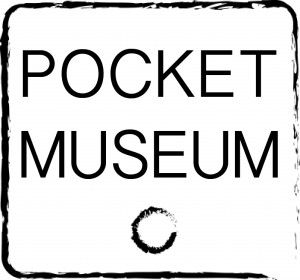It is the end of the semester and the project is complete, the world of John Mitchell Christie is ready to explore. At the beginning of this journey, the group set goals for ourselves, we wanted to present an augmented reality of historical settings around the city of Melbourne. We wanted to incorporate videos, sound, images, and an app, with everything connecting to the central hub (the website). During the six weeks of research, planning, production and editing, elements didn’t always go according to plan, however the final product is what we hoped for, a successful transmedia story that has fragments of the story strategically placed on different platforms.
Overall we ended up shooting one video component, and editing it into into three types of videos, the trailer, the app version, and the full version available on the website; five audio artifacts; created an image timeline; and designed case files for each of the stories. As this story’s time period was so male dominated, the audio artifacts were shared through the voice of John Mitchell Christie’s wife – this way a female audience could be targeted, and it gives the story a modern twist. After all we are making a project that is able to share history through modern and engaging media techniques. Each component is spread across the platforms, and when put together it transforms itself into a story world. As I said in my previous post, we got to the end of the project brief and lost our story or the motivation for the story, and had to figure out how to get it back. When working with various platforms it is easy to have the story spread so far apart it actually breaks, and this was one of the biggest lessons. All of the components have to be a driving force within the story world, each with their own story components, and losing these just isn’t an option. After every component was put together the story was noticeable, it just needed extra information or a background story on the website to tie is all together cohesively.
We created an app, however it wasn’t what the group had hoped for, as we wanted an augmented reality app, this just wasn’t an option within the time frame we were given, and there was no option to include such a feature in ‘The GoodBarber’ program. This meant that we had to go to our back-up plan which was including pin drops around the city of Melbourne on a map, and the user being able to access those locations and read up on the information either on the app created, or the website for further information.
Brontae and I worked very closely with the app and website, however it was my role to design and put together the center piece to this story world (website), it was up to me to tie everything together and make it flow. Without the website this story would fall apart, as it contains added information which is the backbone for the other platforms. Every component that the group wanted to include in the website was added, and further information and design elements – such as the John Mitchell Christie character talking the user around the website – were added to make this story more interactive and engaging for the user, and to motivate them along throughout the transmedia story we have created. The story’s motivation was such a significant topic when receiving feedback for our presentations in week 7.
One point that I made in WK7, was that “I wanted to learn new and innovative ways of making a website/app and to understand the powerful role of transmedia storytelling”. Overall, I have learned how to create a website, overcome hurdles, edit work with a critical eye, and to design a project that is transmedia. Not only will I have these skills for future tasks, but it has made me look at storytelling in a whole new light. The project we set out to do was complete to a level each group member was happy with, and it mirrors our understanding of what a transmedia story is. It is engaging, motivating, and most of all is a modern day digital museum, all at the touch of your fingertips, which will hopefully keep progressing into the future.
Website:
http://pocketmuseumjmc.wix.com/pocketmuseum
Application on Google Play:
https://play.google.com/store/apps/details?id=com.goodbarber.pocketmuseum&hl=en
Vimeo channel:
https://vimeo.com/pocketmuseum
YouTube channel:
https://www.youtube.com/channel/UCLcTXmZ-mJLtqDm4dwJ1TzA
SoundCloud:
https://soundcloud.com/pocket-museum
Facebook:
https://www.facebook.com/pocketmuseum
Twitter:
https://twitter.com/pocketmuseumjmc

